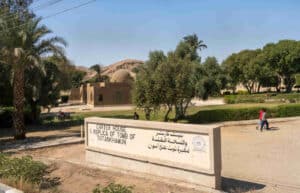Egyptian tea is one of the country’s national drinks, which is not surprising considering the tradition of hospitality that is displayed throughout the Arab world around this infusion. But as we will see in the following lines, the local version of this drink has some particularities that you should know and, above all, try on your next trip to Egypt. At least, if you want to delve into its most genuine popular culture.
A Tea… That is not Tea
The first curiosity of Egyptian tea is that it is not a tea as such. Let us remember that tea is the drink resulting from infusing the leaves of the
However, paradoxically, Egyptian tea is not the drink resulting from infusing the leaves of Camellia sinensis, but a very different one: hibiscus (Hibiscus sabdariffa), specifically, the dried flowers of said plant. And since its color is reddish, Egyptian tea also adopts that striking hue when it is ready for consumption, which gives it an undeniable visual appeal.
In addition, for it to be a truly authentic Egyptian tea, it is said that the hibiscus flowers must have been previously dried in the White Desert. That is why on trips to the oases of the environment, such as Farafra, drinking an Egyptian tea is almost unavoidable.
Hot and Cold, with many Names
Another particularity of Egyptian tea is the variety of names it can receive. And hibiscus is also known as
Also interesting is the temperature at which Egyptian tea is taken, and that also results in different names. While the most common karkadé is taken hot, there is another cold option: after letting the drink rest at room temperature, it is introduced into the refrigerator to then be consumed as a refreshment. In that case, Egyptian tea is known as einab in many places.
The Perfect Welcome
Egyptian tea can be taken at any time and in any context. But without a doubt, the most common thing is to offer it as a gesture of welcome or affection towards another person, which is why it receives the nickname of the ‘drink of friendship’ in some contexts. That is why, during your trip, you could receive this invitation, for example before a talk or upon arrival at an accommodation.
The main benefit attributed to it is to facilitate digestion, so that would be a perfect time to consume it: after a meal or a copious breakfast, but not only. It could also help to
Unlike other Arab teas, the ritual of serving is less formal, although it is common to use cups or glasses, in both cases transparent, thus allowing you to contemplate the attractive red color of Egyptian tea. And to accompany it, the variety of sweet options is enormous, such as



